Inbox and Environment News: Issue 362
June 3 - 9, 2018: Issue 362
Eco Schools Grants
The Eco Schools Program is now open to applications and will close on 3pm Monday 18 June 2018.
PurposeTo fund environmental management projects that assist schools with environmental learning opportunities for students, teachers and the school community. Eco Schools’ projects provide hands-on curriculum-based environmental education focussing on strong student participation.
Funding availableEighty individual grants of $3500, with a total of $280,000 available to schools.
Who can apply?All registered schools in NSW are eligible to apply. Projects working primarily with students with special needs are encouraged.
ObjectivesThe program will fund environmental management projects aimed at achieving the following objectives.
Objective 1Environmental benefits
Enabling schools to promote more efficient resource use and improve the quality of the local environment.
Objective 2Student participation
To promote the development of knowledge, values and behaviour in students that supports environmental sustainability.
Objective 3Teacher engagement
To assist teachers to access targeted professional learning, and to assist with integrating environmental management into curriculum delivery.
Objective 4Managing for sustainability in school and the community
To encourage schools and the community to explore opportunities for working together for sustainability outcomes.
Best practice examples, tips and resourcesA collection of examples, tips and resources based on previous Eco Schools grant successes are available to help you develop your project idea. Links to relevant pages can be found on the Eco Schools Resources page.
Indicative costs are also available to provide an idea of how much your project may cost.
Japan Kills 122 Pregnant Whales In Southern Ocean
May 29, 2018 Humane Society International Australia Humane Society International has today expressed its outrage that 122 pregnant female whales were killed this year in the Southern Ocean as part of Japan’s so-called ‘scientific’ whaling program ‘NEWREP-A’. This information was contained in newly published meeting papers from the International Whaling Commission (IWC) Scientific Committee meeting held in Slovenia in May.
The results show that of the 333 Antarctic minke whales killed this year, 181 were females. 122 or 67% of these females were pregnant and 53 or 29% were immature animals.
“The killing of 122 pregnant whales is a shocking statistic and sad indictment on the cruelty of Japan’s whale hunt. It is further demonstration, if needed, of the truly gruesome and unnecessary nature of whaling operations, especially when non-lethal surveys have been shown to be sufficient for scientific needs,” said Alexia Wellbelove, Senior Program Manager at Humane Society International.
Despite condemnation by the international community and the International Court of Justice, the highest court on the planet, which ruled in 2014 that Japan’s ‘JARPA II’ Antarctic whaling program was illegal and must stop, Japan re-badged its whaling program and sent its whaling fleet to the Southern Ocean for its annual whale hunt in 2015. In a blatant attempt to protect itself from further legal challenge, Japan has withdrawn its recognition of the International Court of Justice as an arbiter of disputes over whales.
“Whales are already facing substantial threats including bycatch in fisheries and marine pollution. Significant conservation efforts are underway worldwide to address these issues, so the least Japan could do is put away the harpoons.
“The continued killing of any whales is abhorrent to modern society, but these new figures make it even more shocking. We look forward to Australia and other pro-conservation countries sending the strongest possible message to Japan that it should stop its lethal whaling programs,” concluded Ms Wellbelove.
The next meeting of the International Whaling Commission is in September in Brazil.
Japan's ultimate goal is the resumption of commercial whaling. The government insists that most whale species are not endangered and that eating whale is part of its culture, even though most Japanese people no longer eat it.
The Australian chapter of Humane Society International expressed outrage over the new figures and called on the Australian government to intervene.
Conservation organization Sea Shepherd has long opposed Japanese whaling in the Southern Ocean and has sent ships since 2005 to intercept the hunts. The group, however, did not send ships this year. Founder Captain Paul Watson told Australian Broadcasting Corp in August that Japan is "using military technology. They have real-time satellite coverage of where we are. We cannot close in on them.""It's a waste of time and money to go down there and not be able to achieve anything," he added.
In November, Sea Shepherd released a grisly and unsettling video of a Japanese whaling fleet hunting in the Antarctic Ocean in an Australian whale sanctuary. The Australian government obtained footage of the hunt in 2008 but suppressed its release over diplomatic concerns with Japan. Sea Shepherd was only able to publicly release the film after winning a five-year Freedom of Information battle that began in 2012.
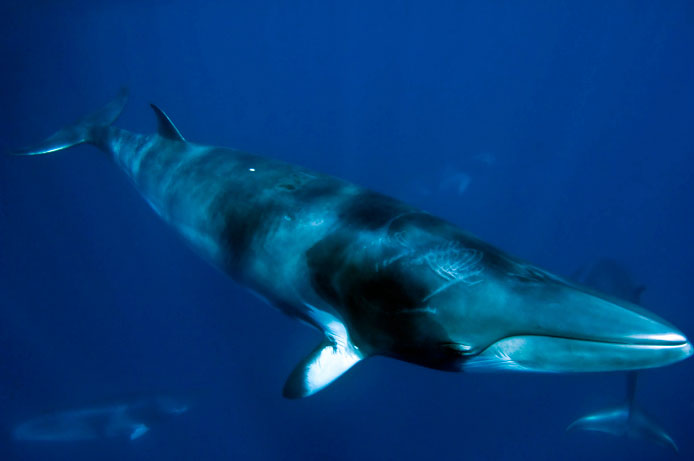
Minke whale

Giving Our Native Fish A Helping Hand Before Winter
May 31, 2018: NSW Office of Environment and Heritage
Important native fish in the Peel River near Tamworth, including the iconic Murray cod and the threatened freshwater catfish, will enjoy a flush of fresh food washed in from the proposed release of water for the environment from Chaffey Dam in early June.
The NSW Office of Environment and Heritage (OEH) and the Commonwealth Environmental Water Office have worked with specialists from the Department of Primary Industries (Fisheries) to design a flow that will improve food supply and provide much needed nourishment and movement opportunities for native fish coming into winter.
"Regulation of the Peel River has meant we aren't seeing as many of the small fresh flows which would have occurred naturally," said Jody Swirepik, the Commonwealth Environmental Water Holder.
"The release will provide a low flow important for supporting populations of native fish," Ms Swirepik said.
The release will occur over 14 days and will see the flow of the Peel River below Chaffey Dam peak at 750 ML/day for 2 days.
OEH Senior Wetlands and Rivers Conservation Officer Paul Keyte said a pulse of water for the environment is needed to wash organic matter off the low in-channel bars into the river system.
"Once these nutrients get into the channel it will be converted to food," said Mr Keyte.
"Coming into winter, this food drop will improve the health and condition of native fish, which we know increases their success for breeding in spring. The flow will also allow fish to move throughout the river system and find more suitable homes, including deeper pools, logs and aquatic vegetation."
The final volume of 3870 ML for the delivery was determined with advice from the community, ecologists and fish experts as the minimum needed to ensure these important environmental outcomes are met.
Rachel Connell, Executive Director Water, NSW Department of Industry said these types of environmental flows provide benefits that improve riverine health, habitat, replenish residual pools and support native fish communities along the river system.
"This release demonstrates cooperation through all levels of government and an integrated water management that achieves whole-of-system outcomes," said Ms Connell.
WaterNSW will send notifications to its customers advising when the flow will commence.
Scientific Assessment To Protect Hunter Water Resources
June 1, 2018: Media release - The Hon. Josh Frydenberg MP, Minister for the Environment and EnergyThe Australian Government today released important research to help protect water resources in the Hunter Region of New South Wales.
The scientists assessed the potential for changes in groundwater and surface water due to coal mining and coal seam gas extraction. The Government has invested more than $90 million to understand the risks associated with these activities.
Wherever possible, we want to encourage investment in our resources — providing much needed jobs for our regional communities. But not at the risk to the environment and the communities that rely on our water.
That's why we've invested in this research. We need strong scientific evidence to be able to make the best decisions in relation to mining activities and mitigate any impacts they may have.
The Hunter bioregional assessment considered the impacts associated with 22 potential new coal mining projects.
My Department will work with proponents of any new projects in the Hunter to understand any impacts before any project is approved.
Further information on the bioregional assessment program and the completed assessments can be found on www.bioregionalassessments.gov.au.
FOI Win Reveals NSW Offsets Policy Fails To Meet National Environmental Standards – But Was Accredited Anyway
Media Release - EDO NSWThe Environmental Defenders Office (EDO NSW), representing Humane Society International Australia (HSI), has successfully argued the public has a right to know that the Australian Government decided to accredit the NSW land-clearing offsets policy despite concerns it failed to meet national environmental standards.
Documents released under Freedom of Information law (FOI) show that the Australian Government identified significant areas where the NSW Biodiversity Offsets Policy for Major Projects, which assesses whether and on what basis projects can undertake broadscale land clearing, failed to meet the environmental standards of the Commonwealth Environment Protection and Biodiversity Conservation Act 1999(EPBC Act).
Despite this, the Commonwealth Minister for the Environment agreed to accredit the NSW policy, allowing projects that impact on threatened plants and animals to be assessed under the lesser standard.
The objective of FOI legislation is to promote better-informed decision-making by increasing scrutiny and discussion of Government activities. Despite this clear mandate to make important information available to the public, HSI, a not-for-profit environmental organisation, faced an unnecessarily drawn-out legal process in the Administrative Appeals Tribunal, as the Department of the Environment continued to object to the release of information.
David Morris, CEO of EDO NSW, stated: “It is appalling that the Australian Government put our client, HSI, through more than two years of litigation, only to release all the documents requested.”
“EDO NSW will always fight, as long and as hard as necessary, to advance the interests of our clients, who in this case were seeking to uphold crucial democratic rights which ensure transparency of government decision-making.”
Alexia Wellbelove, Senior Program Manager at HSI, stated: “This is a major victory for freedom of information, one that shows the serious implications for handing over environmental decision making to the States and Territories. The Australian public has a right to know why the Federal Government gave the go-ahead to a policy that it had itself identified as not meeting national environmental standards. Humane Society International is grateful for the strong representation we received from the EDO in this important case.”
Biodiversity offsets allow developers to buy or manage land elsewhere, or pay money into a fund, to compensate for the clearing of forests and areas containing threatened plants and animals.
Expert scientific and legal analysis clearly showed that the NSW offsets policy provides weaker environmental protection than required under national environment laws. This finding is supported by the more than 60 documents eventually released through these proceedings.
“The documents show the Department of the Environment expressed significant concerns about whether the NSW offsets policy would achieve adequate environmental protection for our nationally threatened plants and animals. Despite these concerns, the policy was accredited and a large number of projects in NSW, both recently approved and currently being assessed, continue to rely on that policy to justify land clearing,” David Morris of EDO NSW said.
More detail:
The released documents showed that in assessing the NSW policy, the Australian Government identified significant inconsistencies between the draft NSW policy and the EPBC standards.
Most notably these included that the NSW policy:- in its draft form, allowed the developer’s offset requirement to be discounted where the NSW Government considers that requiring appropriate offsets may cause a project to be unviable and the project is of significant social and/or economic benefit to the State (in the final version, social and/economic benefits may be a ‘matter for further consideration,’ which allows approval of a project that would otherwise be refused due to unacceptable biodiversity impacts);
- allows rehabilitation of mine sites post-mining to count towards a developer’s offset requirement. This is not currently permitted under the EPBC standards and the Commonwealth considered that mine site rehabilitation should normally be considered a mitigation measure rather than an offset;
- does not adequately consider the risk of relying on offsets to protect biodiversity;
- allows for a time lag between an impact occurring and the related offset being established, which could potentially be significant;
- permits a much greater use of supplementary measures (e.g. funding for research) if direct offsets cannot be found than allowed under EPBC standards;
- in its draft form, did not require offsets to be ‘like-for-like’ under all circumstances (although this was changed in the final policy to require ‘like-for-like’ for EPBC-listed species and ecological communities).
The documents also included a number of case studies that calculate the offsets required under the draft NSW policy against the offsets required under the previous offset policy. These show that overall, less offset areas are required under the new policy than under previous ones.
- in its draft form, allowed the developer’s offset requirement to be discounted where the NSW Government considers that requiring appropriate offsets may cause a project to be unviable and the project is of significant social and/or economic benefit to the State (in the final version, social and/economic benefits may be a ‘matter for further consideration,’ which allows approval of a project that would otherwise be refused due to unacceptable biodiversity impacts);
- allows rehabilitation of mine sites post-mining to count towards a developer’s offset requirement. This is not currently permitted under the EPBC standards and the Commonwealth considered that mine site rehabilitation should normally be considered a mitigation measure rather than an offset;
- does not adequately consider the risk of relying on offsets to protect biodiversity;
- allows for a time lag between an impact occurring and the related offset being established, which could potentially be significant;
- permits a much greater use of supplementary measures (e.g. funding for research) if direct offsets cannot be found than allowed under EPBC standards;
- in its draft form, did not require offsets to be ‘like-for-like’ under all circumstances (although this was changed in the final policy to require ‘like-for-like’ for EPBC-listed species and ecological communities).
Coral Sea Is A “Hawksbill Highway” For Critically Endangered Turtles
30 May 2018: WWFNew satellite tracking has confirmed that critically endangered hawksbill turtles use the Coral Sea as their highway to travel from Papua New Guinea to the Great Barrier Reef.
It adds to mounting concern over the federal government’s draft plans to reduce the Coral Sea’s protected areas by 50%.
The satellite tracking information is part of the “Bring Back the Bills (PDF 1.8MB)” project* to arrest the alarming decline of hawksbills across the Indo-Pacific region.
Millions of hawksbills were killed for their shells, prior to a worldwide ban on the tortoiseshell trade, and the species has never properly recovered.
The northern Great Barrier Reef lagoon was thought to have one of the few remaining large populations but it is endangered and slowly declining.
Anecdotal evidence suggests PNG’s hawksbill numbers are also in decline.
A research trip to the Conflict Group of Islands (29/12/2017 – 12/1/2018) aimed to learn more about PNG’s hawksbills and their relationship to the north-east Australian stock.
The expedition was a partnership between WWF-Australia, the University of the Sunshine Coast (USC), local Milne Bay Province community turtle monitors and the newly established Conflict Island Conservation Initiative (CICI).
Satellite trackers were attached to 10 hawksbills nesting in the Conflict Group of Islands, to discover their migration paths and location of their foraging grounds.
Genetic samples were taken and these will be analysed in coming months to learn if the PNG and NE Australian stocks are related.
Christine Hof, WWF-Australia’s marine scientist and USC’s PhD researcher, said hawksbills are a protected species in Australia but not PNG.
“Hawksbills must be afforded protection across borders at their nesting beaches and feeding grounds, and along their entire migratory path if they are to recover,” Ms Hof said.
It was hoped that because of its remoteness, the Conflict Group of Islands could be a stronghold for hawksbills.
But monitoring by CICI showed that from 2 November to 10 January, of the 352 turtles that attempted to nest in the Conflict Group of Islands, only 33 (fewer than 10%) were hawksbills.
In this isolated region, turtles and their eggs have long been harvested for food and to trade for other items. It’s also feared the shell ends up in the black-market tortoiseshell trade.
CICI turtle monitors rescued four hawksbills from poachers in December.
The Conflict Group of Islands are owned by Australian millionaire Ian Gowrie-Smith.
“My aim is to garner the cooperation of the local communities by way of education, illustration and financial income alternatives to become an iconic illustration of what community-based conservation can achieve,” Mr Gowrie-Smith said.
“I recognise the enormous ecological importance of the islands and wish to preserve it for all our future generations,” he said.
Apart from poaching of turtles and their eggs, threats include capture in fishing gear, marine debris, and climate change impacts.
Sea level rise, caused by climate change, can make nesting beaches inaccessible or can drown eggs.
Climate change can also harm foraging habitat and make sand so hot that nests fatally overheat.
Tree trunks – thought to drift around PNG waters from local harvesting or logging activity – also wash ashore and block turtles attempting to nest.
This season, CICI said turtles struggled with some beaches badly eroded by strong trade winds. Then a nearby cyclone whipped up large waves which destroyed many nests on Panasesa and Irai Islands.
*Collaborative project partners of the Bring Back the Bills project include WWF-Australia, USC, local Milne Bay community turtle monitors, CICI, and its volunteers.
The field trip and satellite trackers were supported by WWF-Australia, Isaacson Davis Foundation, USC and Reef HQ Aquarium Turtle Hospital.
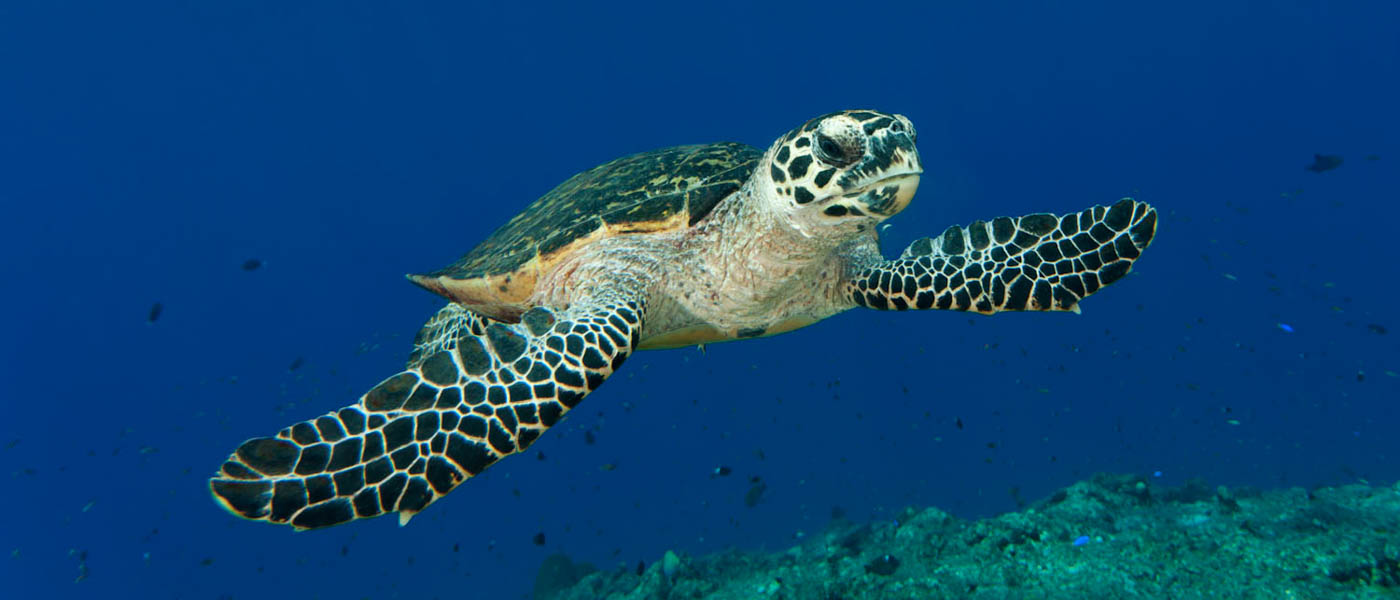
A hawksbill turtle swimming through a reef, Kimbe Bay, Papua New Guinea © Jürgen Freund / WWF

Scientifically-Based Wetland Restoration On A Grand Scale
May 29, 2018: Deborah Smith, UNSW
UNSW scientists are members of a consortium chosen by the NSW Government to restore one of the most important wetlands in the Murray-Darling Basin – the Nimmie-Caira system of the Lowbidgee wetlands on the Murrumbidgee River system.
The NSW Minister for Primary Industries, the Hon. Niall Blair MLC, has announced that a consortium led by The Nature Conservancy and including the UNSW Centre for Ecosystem Science was the successful proponent for future stewardship of Nimmie-Caira – an 85,000 hectare area of Murrumbidgee floodplain in southern NSW.
The consortium also includes the Nari Nari Tribal Council and the Murray-Darling Wetlands Working Group.
“Nimmie-Caira is a magnificent ecosystem, with outstanding biodiversity,” says UNSW Centre for Ecosystem Science Director Professor Richard Kingsford, who carried out much of the original science highlighting the international significance of Nimmie-Caira’s wetlands.
“We are extremely excited to be part of this vital, high-impact restoration project, which involves environmental conservation, collaboration with local Aboriginal communities, as well as sustainable development and agricultural production.”
The Australian and NSW Governments originally bought back the land and water rights for this extensive wetland, including 11 farms and their water rights along the Murrumbidgee, in 2013 in a project costing $180 million. This was the largest water buyback under the Murray-Darling Basin Plan, designed to return 137 gigalitres of water a year to the wetlands.
Under the management scheme to be implemented by the consortium, commercial activities such as low impact grazing, tourism and carbon farming will boost the local economy around Hay and Balranald. Commercial proceeds will be reinvested in environmental works to protect habitats for threatened animals and plants, such as the Southern Bell Frog, Mossgiel Daisy and Australasian Bittern.
The Nari Nari Tribal Council will play a critical role in the management of the property, providing new opportunities for Indigenous employment, improved health, education and reconnection to country.
Professor Kingsford, who has worked closely with state and federal governments and the local people in the region, says the restoration of Nimmie-Caira provides an unparalleled chance to learn how best to manage environmental flows in the Murray-Darling Basin.
“We can potentially manipulate large volumes of environmental flow and study how native fish respond, the impact on waterbird breeding and on the re-establishment of flood-dependent vegetation,” he says.
Dr Kate Brandis, a Research Fellow with the Centre for Ecosystem Science, says: “Nimmie-Caira is one of the more important sites in Australia for the breeding of colonial waterbirds, such as Straw-necked Ibis, Royal Spoonbills and cormorants. These species need large floods to trigger breeding.”
Professor Kingsford says the kind of partnership represented by the consortium offers great opportunities for improving the effectiveness of conservation efforts.
“I am looking forward to implementing clear goals and measuring key objectives, so we can track our successes and failures in restoring this great part of NSW.”
GWI Experts Weigh In On Water Policy
29 May 2018
UNSW-GWI experts on ecosystems and water law have made three submissions recently in response to two significant consultations being undertaken by Australian State Governments.
The Murray-Darling Basin Royal Commission was established by the Government of South Australia in January 2018 to investigate the operations and effectiveness of the Murray-Darling Basin system. The Commission invited submissions from a range of people and groups with information to contribute to the inquiry.
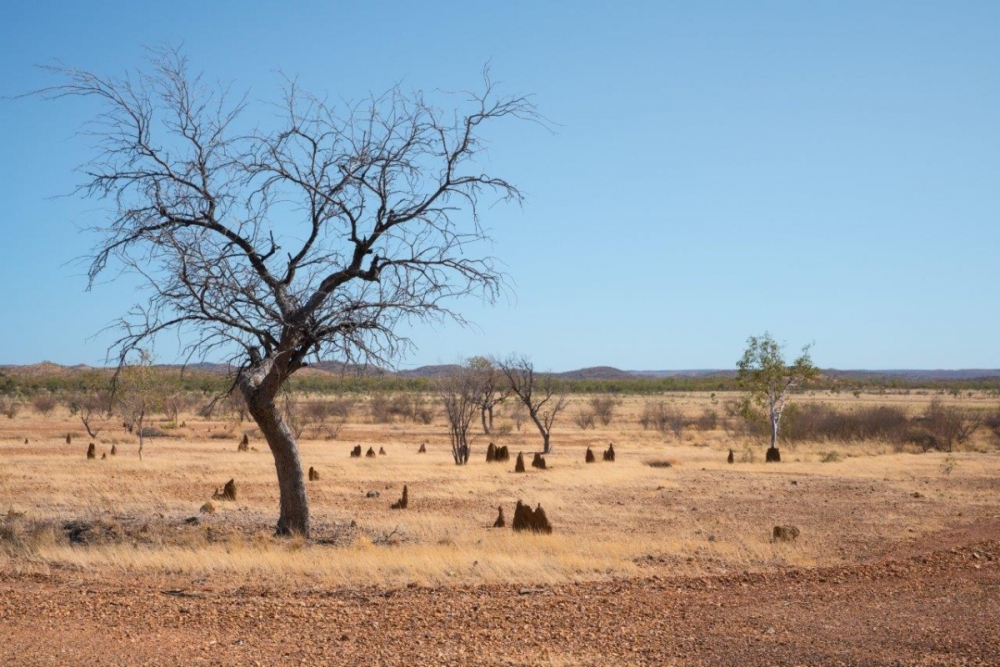
Murray Darling Basin. photo by UNSW Global Water Institute
Professor Richard Kingsford, Director of the UNSW Centre for Ecosystem Science, and Associate Professor Cameron Holley, from the UNSW Faculty of Law, each provided a submission commenting on some of the key challenges identified in the Commission’s terms of reference, which includes identifying whether the Murray Darling Basin Plan and the Water Act 2007 are likely to achieve what they were designed to do.
Prof Kingsford’s submission proposes that the goal to restore rivers in the Murray-Darling Basin remains vulnerable to policy and management shifts that favour irrigation over other socio-economic sectors and environmental health goals—thus undermining the objectives and outcomes of the Water Act, the Basin Plan and the intended environmental outcomes.
To support his claims, Kingsford’s submission describes five main policy and management concerns relating to implementation of the Basin Plan: the ongoing reductions in the volume of environmental flow; a lack of transparency in accounting and auditing of water use with inadequate compliance efforts; inadequate use of scientific evidence and technology; the need for improved focus for planning and management on the whole river system; and an absence of punitive measures available for the Australian Government to hold States to account for inadequately implementing the Murray-Darling Basin Plan.
…substantial improvements to compliance and enforcement are needed, because no matter how many novel governance tools are designed, it will all be insufficient if compliance and enforcement is inadequate or absent. - A/Prof Cameron Holley, UNSW Faculty of Law
Associate Professor Cameron Holley from the UNSW Faculty of Law also provided a submission to the Royal Commission in collaboration with Associate Professor Darren Sinclair from the University of Canberra, Dr Tariro Mutongwizo, Postdoctoral Fellow at UNSW Sydney and Amelia Brown, Research Assistant at UNSW Sydney.
This submission was concerned primarily with issues of compliance, enforcement, monitoring and metering. A/Prof Holley and colleagues state that the current design and implementation of water law and regulation does not appear sufficient to meet future water challenges, particularly in the face of climate change.
It highlights the challenge of ensuring that non-urban water users abide by their individual conditions and extraction limits, and details four key recommendations: supporting and implementing water compliance and enforcement; educating water users; improving monitoring and metering in water markets; and rebuilding and intensifying system wide monitoring and benchmarking.
Holley’s submission states that “…substantial improvements to compliance and enforcement are needed, because no matter how many novel governance tools are designed, it will all be insufficient if compliance and enforcement is inadequate or absent.”
Recently, Prof Kingsford also provided a submission to the consultation papers for Implementing the NSW Floodplain Harvesting Policy and Better Management of Environmental Water.
Kingsford’s submission states that implementation and management policies currently proposed in the two consultation papers have major risks and inconsistencies, and do not adequately reflect the inquiries and criticisms of water management in NSW—nor do they consider the current evidence base or technology needed for tracking water use.
The submission describes the risks of making policy decisions that may exacerbate impacts on Ramsar-listed wetlands and downstream users and lists some recommendations for consideration.
To view the full submissions, please use the links below.

Warming Climate Could Threaten Regeneration After Bushfires
May 30, 2018: University of TasmaniaRegeneration after bushfires could be compromised by climate change, new research shows.
Scientists from the University of Tasmania’s School of Natural Sciences looked at how certain chemicals, produced by bushfires and crucial to stimulating new plant growth, respond to warming temperatures. In particular, researchers studied karrikins, which are among the most important group of chemicals which stimulate the germination of seeds of many types of plants following a bushfire.
Professor Steven Smith and Dr Lu Wang found karrikins will only stimulate seed germination under conditions which favour seedling growth and establishment.
Using the study species Arabidopsis thaliana (also known as thale cress), Dr Wang found that if the temperature is too high, or if the seed experiences water deficit during exposure to karrikins, seed germination is inhibited rather than stimulated.
“Despite the scenes of blackened landscapes following bushfires, we know that new plant growth will soon emerge and that before too long the green landscape will return,” Professor Smith said.
“Our study found that even a few degrees above the optimum germination temperatures, karrikins can inhibit seed germination.
“If this discovery holds true for fire-following species more broadly, it could point to serious consequences for landscape recovery after bushfires as we experience more frequent warm periods due to climate change.”
Professor Smith’s latest findings build on his pioneering research in the field, as it was his team who originally discovered the mechanism by which chemicals, produced by bushfires, stimulate germination of dormant seeds.
“We might find that landscapes experiencing warmer weather following a bushfire, might show poor seed germination and reduced species diversity, resulting in less effective landscape regeneration,” Professor Smith said.
“These findings argue for further research to determine the impact of this response of seeds to karrikins in natural environments, and to find ways to better manage regeneration after fires.”
The research paper, ‘Karrikin-KA12 signalling provides Arabidopsis seeds with tolerance to abiotic stress and inhibits germination under conditions unfavourable to seedling establishment’, was published in the prestigious journal New Phytologist.
Powerful Owl Release
March 18, 2018: Avalon Preservation AssociationPNHA's Jacqui Marlow has advised that a Powerful Owl chick has been released in Plateau Park following its recuperation in Taronga Park.
If you see it there being harassed, or even if you see it at all, can you please phone her on 0458 194 127.
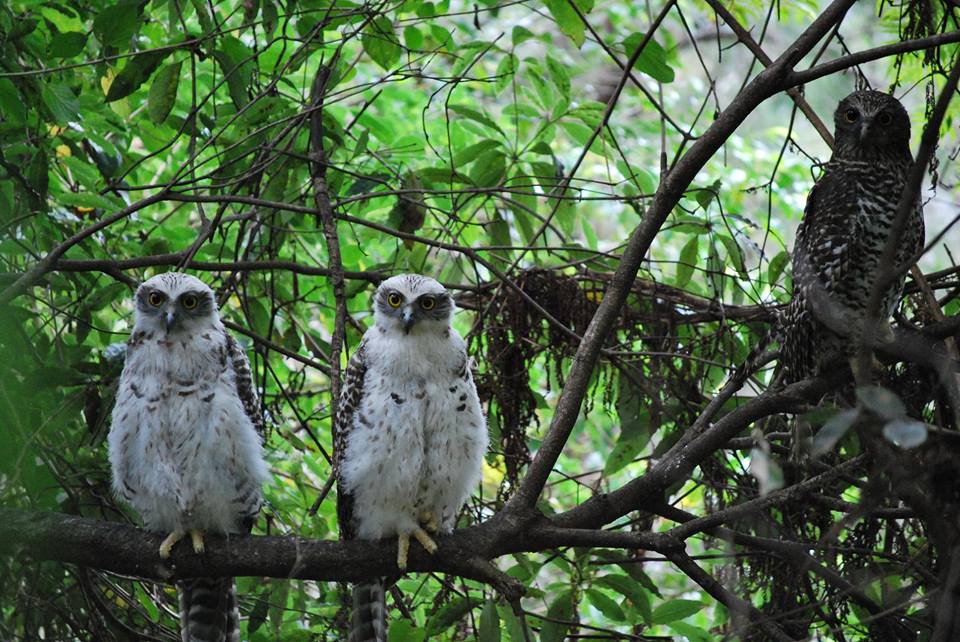
Powerful owl family - photo courtesy PNHA

Refusal Of Christmas Island Phosphate Exploration
May 31, 2018: Media release - The Hon. Josh Frydenberg MP, Minister for the Environment and EnergyThe Government has decided not to approve Phosphate Resources Limited's exploration program on Christmas Island because it is likely to have significant and unacceptable impacts on matters protected under national environment law.
The decision follows a rigorous and comprehensive assessment under the Environment Protection and Biodiversity Conservation Act 1999, including the consideration of the social and economic benefits of the proposal as well as comments received on the proposed decision from relevant Ministers and from Phosphate Resources Limited.
The Government's decision reflects the fact that Christmas Island is a unique and irreplaceable environment. The Island was uninhabited until the late 19th century which allowed many species to evolve without human interference.
Christmas Island is home to many unique and rare plants and animals. These include the millions of red crabs which migrate to the sea each year to spawn in what has been called one of the wonders of the natural world.
Environmental damage on small islands has a far greater impact because of its limited capacity to recover from declines in biodiversity caused by the cumulative effects of land clearing, habitat fragmentation and invasive species compared to large land masses.
While there has been some mineral extraction dating back some 100 years, the Government has determined that this particular proposal is likely to have unacceptable impacts on the environment of Christmas Island, including the endangered Abbott's Booby, whose rainforest home on the Island is the only remaining nesting habitat for this bird in the world, and the endangered cave fern.
There is also a very real threat that this pattern of clearing would allow the introduction of aggressive weed species with the capacity to overwhelm native vegetation and to alter the structure of the surrounding forest.
A New Analysis System Is Able To Identify Pollutants From Cosmetics In Seawater
May 29, 2018: University of CórdobaA University of Cordoba research group has designed a method that detects the presence of pollutants in seawater in a faster and more efficient way and also at very low concentrations. Specifically, the team from Cordoba, in partnership with the University of the Balearic Islands, focused on several substances used as preservatives in soap, lotion and deodorant, which end up in the sea. Concerns about parabens and triclosan have been voiced from different sectors, and the European Commission has been monitoring these substances and limited their use. Parabens and triclosan keep bacteria and fungi from damaging shampoo and toothpaste, but they become a real problem once they get to the sea, where they affect the marine ecosystem. Identifying their presence contributes to the design of measures that correct their effects. This is the idea behind the work on the system designed by the University of Cordoba.
The key to this new method based on nanotechnology is the system known as 'Lab-on-Valve,' used by the scientific community for sample analysis. More specifically, the research team led by Analytical Chemistry Professor Marisol Cárdenas has added carbon-coated titanium dioxide nanotubes to this system. To date, the use of nanomaterials in the Lab-on-Valve system was not possible before due to their tendency to aggregate in aqueous media. In this case, the University of Cordoba research group was able to synthesize nanoparticles compatible with the Lab-on-Valve system due to their easy dispersion.
The new system was recently described in the journal Analytical Chemistry. The study's primary author, University of Cordoba researcher María Teresa García Valverde, explains that "the combination of the Lab-on-valve system, titanium nanotubes modified with amorphous carbon as phase extraction and the measuring tool connected to the system, allows for quantifying parabens and triclosan at very low concentrations." For the most part, these pollutants come from personal hygiene products such as soap, sunscreen, toothpaste and other toiletries. All of them have very negative effects on the environment.
García explained that with the Lab-on-Valve system, the nanotubes are manipulated automatically, which reduces errors in measurement and "their nanometric size makes them more efficient than other adsorbent solid materials on the market." She added, "this method is faster, more practical and more efficient."
María Teresa García-Valverde, María Rosende, Rafael Lucena, Soledad Cárdenas, Manuel Miró. Lab-on-a-Valve Mesofluidic Platform for On-Chip Handling of Carbon-Coated Titanium Dioxide Nanotubes in a Disposable Microsolid Phase-Extraction Mode. Analytical Chemistry, 2018; 90 (7): 4783 DOI:10.1021/acs.analchem.8b00158
Have Your Say On The Management Of Forests
May 15, 2018: Media Release
The NSW Government has begun consultation on the new Coastal Integrated Forestry Operations Approvals (IFOA), which sets out how native forestry operations are managed and regulated on public land in NSW.
Minister for Lands and Forestry Paul Toole and Minister for the Environment Gabrielle Upton said the Coastal IFOA remake was a vital step forward in the NSW Government’s forestry reform agenda.
“The NSW Government is committed to the long term and sustainable management of NSW’s forestry estate, for the benefit of the community, environment and our $2.4 billion forestry and product manufacturing industry,” Mr Toole said.
“The NSW Government is determined to get the right balance between the environment and industry – environmental standards can be strengthened at the same time as providing long term security of wood supply and certainty to investors and the industry.
“For the proposed new Coastal IFOA, this means ensuring that we do not erode environmental values or impact the critical wood supplies that our regional economies or industry rely on.
“Over the past six months, we have undertaken consultation on the Regional Forest Agreements, and this is the next important step.”
Ms Upton said the new Coastal IFOA includes once-in-a-generation changes that will ensure the environment is protected.
“For the first time ever, minimum thresholds are being set for the permanent protection of threatened species and habitat across the landscape, and the rules will be more transparent and enforceable,” Ms Upton said.
New legislation will be introduced that will increase penalty notices for not complying with the Coastal IFOA from $1,100 to $15,000. All other private native forestry businesses and regulated industries in NSW already face fines of at least $15,000.
“These changes are making it fairer for all industries to do business in NSW, while offering further protections to our State's forests,” Ms Upton said.
Other changes to the Coastal IFOA include:- The merger of four current Coastal IFOAs into a single approval for the entire coast of NSW;
- New rules that place limits on harvesting impacts over time and across the landscape;
- Map-based protections with simplified rules for operating near boundaries;
- Increased mapping of threatened ecological species, koala habitats, streams and trees, and;
- Permanent protections for giant trees and hollow-bearing trees.
- To complement the new Coastal IFOA, the NSW Government will soon commence a mapping exercise, applying modern technologies to gain a better understanding of key state forest sites on the north coast.
This work will be overseen by the Natural Resources Commission with independent environmental assessments to be designed and carried out by the Office of Environment and Heritage. The public will have a chance to have their say on the proposed framework and mapping approach in 2019.
For more information, and to have your say on the Coastal IFOA, visit: https://engage.environment.nsw.gov.au/forests
______________________________
From 'Proposed multi-scale landscape approach – download theMulti Scale Approach Factsheet here' Doc.;COASTAL IFOA SCALE• Includes all public coastal forests in NSW and consists of over 5.2 million hectares.• Across this area of public forests is a patchwork of State Forests and forest protected in National Parks and State Flora Reserves.• State Forests make up around 30% of the public forests in the Coastal IFOA area. Native timber production forests cover around 16% of this area.Environmental protections include:• An established network of protected public land conserving important habitat and ecosystems across coastal NSW.• The broad landscape-based habitat protection network includes National parks, Flora Reserves and special management zones.• Annual timber volume caps are also set to ensure a long term ecologically sustainable supply of timber.• Reporting requirements apply and monitoring to evaluate and ensure environmental outcomes are being achieved.
MANAGEMENT ZONE SCALE• A defined geographic region with an average size of 50,000 hectares.• Multiple timber production forests occur within each management area.• These areas will be fixed and mapped at the commencement of the proposed IFOA.• On average 50% of the management zone of state forests is protected.Environmental protections include:• Annual limits on the amount of harvesting in each management area to distribute harvesting across the landscape.• A maximum of 10% of a management area can be harvested per year.• If the management area is zoned for intensive harvesting,then a maximum of only 5% of that management area can be intensively harvested per year
LOCAL LANDSCAPE AREA SCALE• A defined area of timber production forests no larger than 1500 hectares.• On average there are four local landscape areas in each State Forest.• These areas will be mapped out progressively over time.• An average of 38% is protected before the new wildlife habitat clump requirements are considered. This will increase to an average of 41%.Environmental protections include:• A minimum of 5% of the harvest area to be permanently protected as a wildlife habitat clump to maintain habitat diversity and connectivity.• Rainforest, high conservation value old growth, habitat corridors and owl habitat will continue to be protected.• Threatened ecological communities have been mapped and will be excluded from harvesting.• Streams are more accurately mapped and exclusion zones apply to provide landscape connectivity and protect waterways.• Distributes intensive harvesting across the landscape and over a minimum 21 year period.• Improved koala mapping to retain koala browse trees to support movement between areas and food resources.
SITE• A site is the area where harvesting is taking place. Sites vary in size from about 45 to 250 hectares.• There are many sites, called coupes or compartments, within each local landscape area.• An average of 41% of State Forests at a site scale will be protected, increasing to 45% with added tree retention clumps.
Environmental protections include:• Areas will be permanently protected to provide short term refuge, maintain forest structure, and protect important habitat features.• Additional areas no less than 5 – 8% of the harvest area will be permanently set aside as new tree retention clumps.• Hollow-bearing trees, nest and roost trees and giant trees will be permanently protected to provide ongoing shelter and food resources.• Some target surveys will be retained for unique species of plants and animals that require protection.• Sites will now be measured, mapped and monitored with mobile and desktop devices.
Visit: Proposed changes to timber harvesting in NSW's coastal forests - NSW Government; 'Once approved, the new Coastal IFOA will set the rules for how we use and harvest these forests so it’s important that you have your say.'
- The merger of four current Coastal IFOAs into a single approval for the entire coast of NSW;
- New rules that place limits on harvesting impacts over time and across the landscape;
- Map-based protections with simplified rules for operating near boundaries;
- Increased mapping of threatened ecological species, koala habitats, streams and trees, and;
- Permanent protections for giant trees and hollow-bearing trees.
- To complement the new Coastal IFOA, the NSW Government will soon commence a mapping exercise, applying modern technologies to gain a better understanding of key state forest sites on the north coast.
Permaculture Northern Beaches 2018 Events
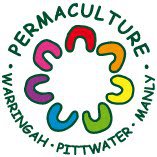 Manly • Warringah • Pittwater | Sydney
Manly • Warringah • Pittwater | Sydney
Permaculture Northern Beaches (PNB) is an active local group based on Sydney's Northern Beaches. Our parent body is Permaculture Sydney North.
PNB hold monthly permaculture related events on the 4th Thursday of each month at 7:15pm at the Nelson Heather Community Centre, Banksia Room, 5 Jacksons Rd, Warriewood
 Manly • Warringah • Pittwater | Sydney
Manly • Warringah • Pittwater | SydneyOpti Tips: Sailing & Bailing
Published on 28 May 2018 by Fletcher WaltersThis video is about Opti Tips Sailing & Bailing
How Far Can Your Opal Card Take You On A Sunday?
Article by HOLLY PAYKEL, © State of New South Wales through the Office of Environment and Heritage
Harbour views, lush picnics and epic waterfalls will only set you back two dollars sixty every single Sunday - so why not get out and explore the beauties of Nature within these glorious National Parks. It's World Environment Day and World Oceans day this week, both with a focus on getting rid of plastics - so you could even do your bit in celebrating our earth and ocean by picking up a few bits of plastic should you find some along the ways.
As many now know you can Travel all day on Sundays on trains, buses, ferries and light rail and pay no more than:
$2.60 a day for Adult$2.60 a day for Child/Youth$2.60 a day for Concession$2.50 a day for Gold Senior/Pensioner.
This Article outlines how to get to and enjoy seven spots within an hour or two of downtown Sydney.
An overview of the following is provided: full article at this link. Winter is a great time to go for a stroll in the bush; it's cooler, less crowded and the air and sky are clearer - enjoy our NSW National Parks!
NIELSEN PARK - 40 MINS EAST OF SYDNEYNielsen Park in Sydney’s Eastern Suburbs boasts all of the above, with the calm, perfect waters of Shark Beach. Relax, no actual sharks involved – you’ll be extra safe with the shark net from October through to April. Stroll down the Hermitage Foreshore Track to cop views of Shark Island and the Sydney Harbour Bridge in all their glory.
But what about those hard earned snacks? You’ve come to right place. With plenty of picnic spots to choose from along the way – Bottle and Glass Point are the gold-class options – the world’s your oyster (BYO cheese platter).
Circular Quay to Nielsen ParkFrom Circular Quay, jump on the E7 Eastern Suburbs ferry to Rose Bay Wharf (about 15 minutes)Hop on the 324 bus down New South Head Road and get off near Hopetoun Avenue (about 10 minutes)Take the 15 minute stroll down Wentworth Road to the beach.Alternatively, you can catch the 325 bus from Town Hall Station to Vaucluse Road near Greycliff Avenue which is a few minutes walk from the park.
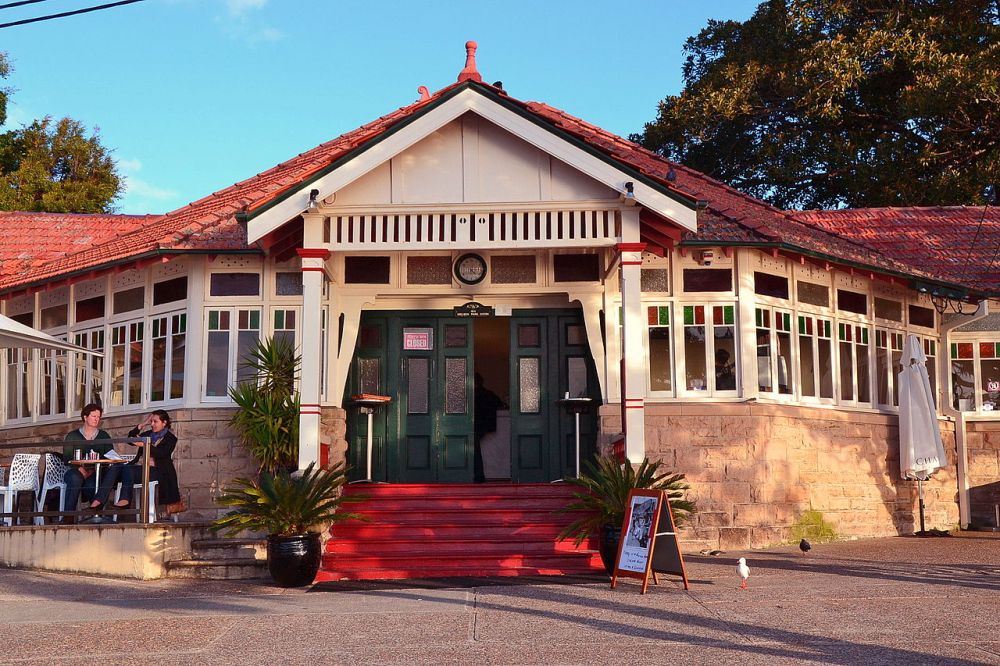
Federation kiosk, Nielsen Park. Photo by Sardaka
KU-RING-GAI CHASE NATIONAL PARK - ONE HOUR 45 MINUTES NORTH OF SYDNEYBarrenjoey Lighthouse is sure to make you one damn proud Aussie with its epic panoramic ocean views. From 11-3pm (Sundays only), you can enjoy half-hour guided Lighthouse tours at a low five bucks. Throughout May – November keep your eye out for dolphins and whales jumping up to say ‘whale hello there’. To take your whale watching to the next-level, download this awesome Wild About Whales app, which includes real-time whale watching updates.Take the L90 bus from Wynyard Station through to Beach Road near Governor Phillip Park Station in Palm Beach (should take about 90 minutes), and from there it’s about a 15 minute stroll to the start of the track.
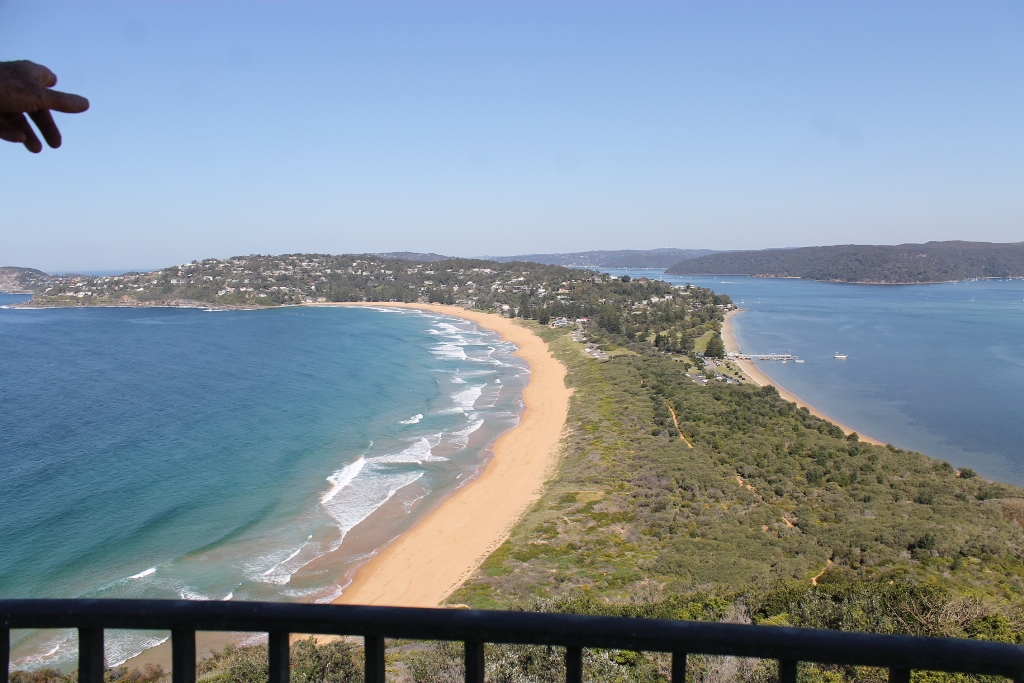
HEATHCOTE NATIONAL PARK - 60 MINUTES SOUTH OF SYDNEYWith a huge selection of beautiful bush tracks, NSW’s Heathcote National Park is a winner. Getting there is easy – take the T4 line direct from Central station to Waterfall station and you’ll be there in an hour. Once you’ve arrived, you’ll come across the Bullawarring Walking Track; one for those with a little more experience. Along the 5.5km pathway, you’ll meet plenty of Aussie locals – like the yellow-tailed black cockatoo, eastern blue-tongue lizard and the adorable swamp wallabies – to name a few.
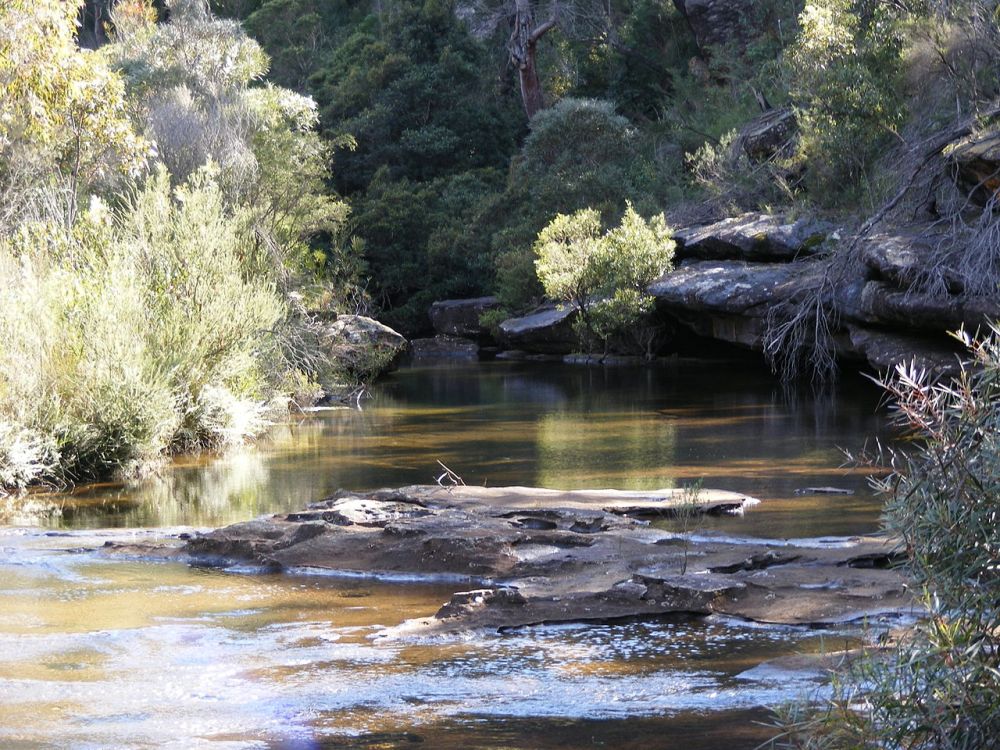
Heathcote Creek, Heathcoate National Park in the Sutherland Shire. Photo by Adam.J.W.C.
Central Station to Waterfall StationTake the T4 Eastern Suburbs line from Central StationArrive at Waterfall station, walk a few minutes to the Bullawarang walking track
BLUE MOUNTAINS NATIONAL PARK - ONE HOUR WEST OF SYDNEYBlue Mountains National Park is an all-time fave for weekend antics, bursting with next-level views, rare and ancient species, iconic landmarks and heaps more.
Enjoy the historical bearings of the Red Hands Cave walking track, thought to have been used by the Darug people for thousands of years. The 8km loop trail requires some bushwalking experience and begins near the Red Hands Cave walking track carpark. Despite being painted between 500 and 1600 years ago, its extensive layers of hand prints in the earthy colours of red, orange and yellow are still vibrant as ever.Once you’ve worked up a sweat, cool off at the swimming holes along the Blue Pool Walking Track.
If you prefer pro-level panoramic pics, the Echo Point Lookout is where it’s at. Keep on the train to Katoomba, and take a short bus trip to take in the crown jewel of Blue Mountains views: The Three Sisters.
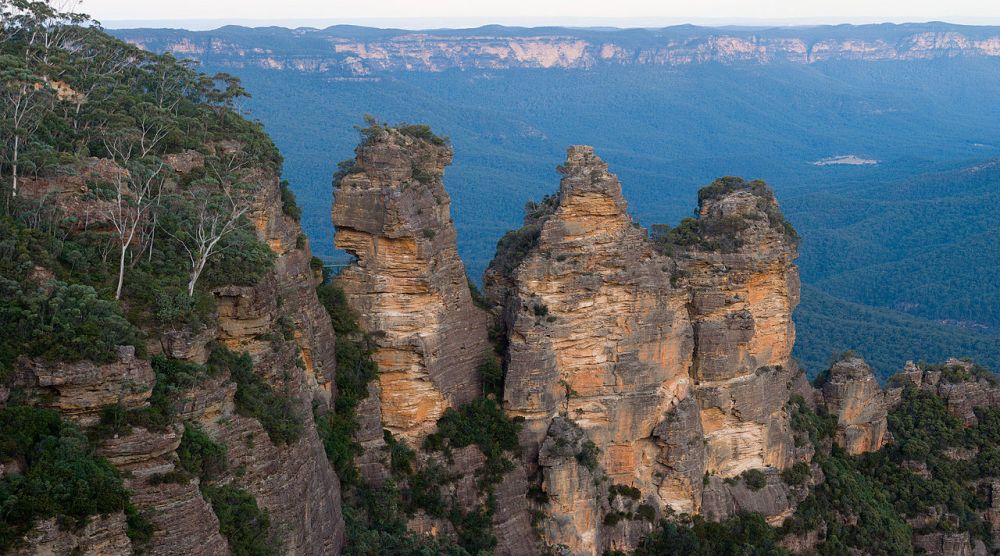
The Three Sisters towering above the Jamison Valley. The lighter coloured orange/yellow sections indicate fresh rock, exposed by recent erosion. Photo by Julia W/Diliff.
Central Station to Red Hands and Rock PoolFrom Central Station take the direct 1 hour train on the Blue Mountains line to Glenbrook StationCentral Station to Echo PointFrom Central Station take the Blue Mountains line and head to Katoomba StationAt Katoomba Station take the 686 bus which will take you straight to Echo Point
LANE COVE NATIONAL PARK - 1 HOUR NORTH OF SYDNEYEnter Lane Cove National Park. Just 17 km from the city centre, it’s hard to believe this totally magical landscape – with its mix of eucalypt forests, casuarina woodland and saltwater wetlands – is just up the road.
There are plenty of hikes to embark on if you’re feeling spritely (the Riverside walking track circuit is 10kms or the ambitious Great North Walk clocks in at 20kms one way) but there are plenty of chill activities, too. The rowboats, canoes and pedal boats are the real star here – bring the Go-Pro and hire one out from the Lane Cove Boatshed for a bargain and guaranteed laughs.
Don’t forget to bring the snags and veg and reward yourself with a tasty BBQ. You’ll find heaps of facilities for cooking at the picnic areas peppering the park. Remember, before you embark on any walk, bring a water bottle along as there are no drinking facilities.Keep your eye out for echidnas in Lane Cove National Park. While they’re nocturnal, they’ve been known to catch some sun rays in the warmer months.
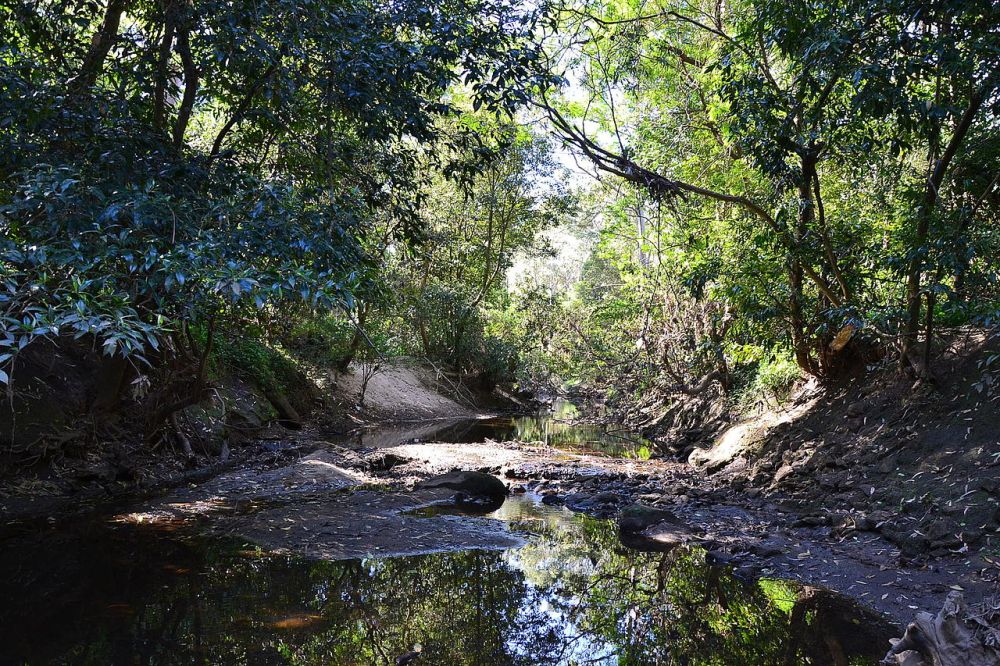
Lane Cove River, between Macquarie Park and West Pymble. Photo by Sardaka.
Central Station to Lane Cove National ParkTake the T1 North Shore line to North Ryde, and from there it’s a about a 2km walk to the entrance.Alternatively you can take the 610, 292, or 288 buses from Wynyard Station to Lane Cove.
KAMAY BOTANY BAY NATIONAL PARK - 45 MINUTES SOUTH OF SYDNEYThis place has a stack happening, including ridiculously good whale watching (best between May and November) at Cape Solander. While you’re there, stretch those limbs and wander the beautiful Burrawang Walk, a short 1km walk full of historical goodness, including Captain Cook’s landing place. Look out for the pro surfers at “Ours” in Cape Solander – Sydney’s infamous big wave surfing spot. If the wave does make an appearance, you’ll be in for a treat as it’s considered one of the strongest, heaviest in the world.
Since 2014, “Ours” is now home to the much anticipated annual surfing competition, Red Bull’s Cape Fear event. Onlookers watch in suspense as pro-surfers from all around the world attempt to tackle one of the world’s most dangerous waves. The wave is notorious for pounding a heavy slab of water onto a shallow, water lined reef, where those who walk away unscathed are considered lucky.
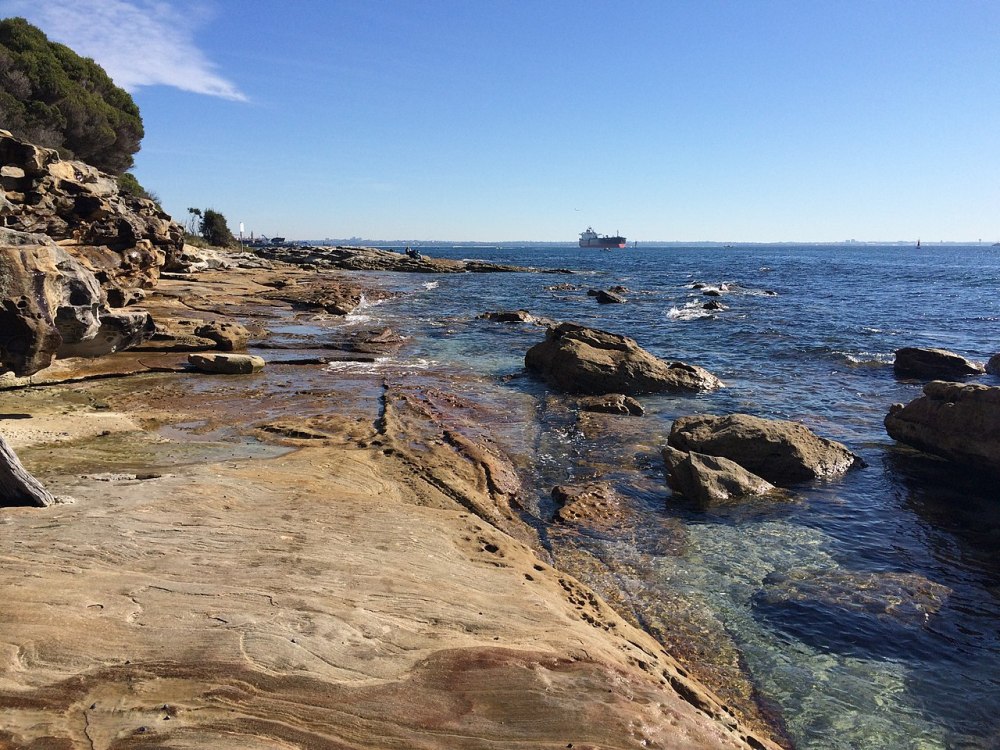
Taken from Inscription Point on the South Head region of Kamay Botany Bay National Park. Photo by Philip Terry Graham.
Central Station to Cronulla StationFrom Central Station take the T4 Eastern Suburbs and Illawarra line straight to Cronulla Station. At Cronulla Station take the 987 bus to Kurnell.
GARIGAL NATIONAL PARK - 1 HOUR NORTH OF SYDNEYBiking, bushwalking and picnicking among a forest of Red Gums makes for an enviably unique Sunday experience. Garigal National Park’s Cascades trail, takes you past waterfalls so fresh you’ll have never felt more alive.
The trail is named for its waterfalls, rock platforms and rock pools at the junction of Middle Harbour and French’s Creek. Getting Hungry? Pause here to throw out a fishing line, and if you’re lucky enough to catch one, fry up that flathead at Davidson’s Park Picnic area (Remember you need a recreational fishing licence in NSW – apply online). Can’t get any fresher than that. (But make sure you bring some back-up tucker just in case as there are zero cafes.)
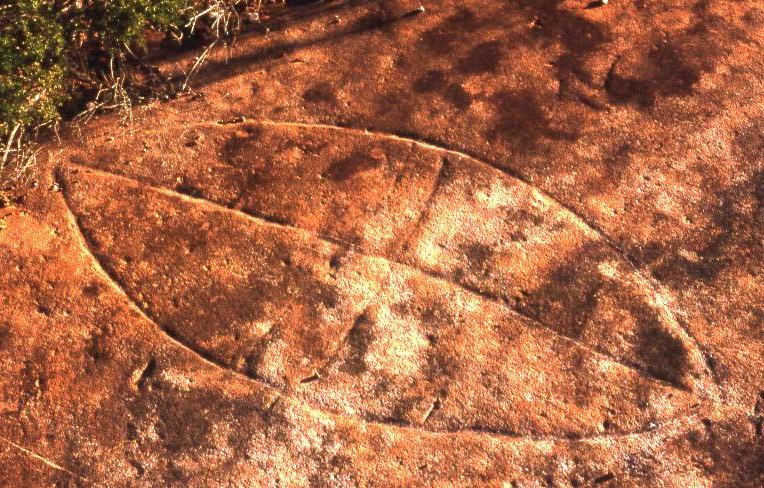
Aboriginal rock carving near Bantry Bay. Photo by Clytemnestra
Wynyard Station to BerowraFrom Wynyard Station, get yourself on the North Shore train line to Berowra, followed by a 10 minute bus ride (582), then a 15 minute stroll.
It’s basically impossible to get anything for less than $2.60 on a Sunday; coffee, ice cream, an avocado. The list goes on. But what you can do is have a cracking day out exploring some Sydney’s best national parks, all while leaving the car at home. What are you actually waiting for?






“This Is Me” By Keala Settle (From The Greatest Showman) - Cover By One Voice Children’s Choir
Published January 2018Under the musical direction of Masa Fukuda, watch One Voice Children’s Choir sing, dance, and perform with special guests, BEKM and Aeris Aerial Arts.
One Voice Children’s Choir is a 501(c)(3) nonprofit corporation based in Utah, USA. The vision statement of the choir is, “through music, we inspire, enrich, uplift, and serve our global community, while building youth as One Voice.”
BEKM, is a Utah-based band made up of five young award-winning musicians ranging in age from 9 to 15 and led by One Voice Children’s Choir member, Easton Shane. The band formed in 2016 and covers a blend of rock, pop, funk and blues that spans decades. BEKM delivers a youthful, energetic and infectious sound filled with optimism, passion, and intent.
Lead Guitar: Easton Shane, 14 Piano: Emily Faith Paxman, 15 Bass: Eve Wilson, 14Guitar: Max Brooks, 14Drums: MILANA, 9
Aeris Aerial Arts is a Utah-based circus arts organization specializing in aerial silks, aerial hoop, aerial straps, aerial hammock, flexibility and contortion, acro yoga, and hand balancing. Under the direction of Darla Davis, and as part of the Youth Circus Organization, Aeris Aerial Arts values performance opportunities, and can be seen in Sony Music Videos, Festival of Trees, The Osmond’s Wonderama, Aeris Original Cirque-Style Productions, Odyssey Dance Theater Productions, High-End Corporate Events, and more.
Performers:Adelie Zupancic (pink hair)Rachael Frogley (left)Loganne Zupancic (right)
New: Free Resources From Splash And Bubbles!
The World Oceans Day people partnered with Splash and Bubbles to provide all new World Oceans Day resources for kids! Developed with an advisory panel of top marine biologists, digital innovators and educators, Splash and Bubbles:- Encourages kids ages 4 to 7 to explore the natural undersea world.
- Focuses on themes of diversity, individuality, interconnectedness and the celebration of learning and discovery.
- Shows the importance of taking care of the ocean.
Visit their website for videos, games and activities - : pbskids.org/splashandbubbles

- Encourages kids ages 4 to 7 to explore the natural undersea world.
- Focuses on themes of diversity, individuality, interconnectedness and the celebration of learning and discovery.
- Shows the importance of taking care of the ocean.

Needed: School For Plastic Bottle Cap Mural Project
I - Eco Artist & Designer Angela van Boxtel -am looking for a school that be interested in a Plastic Bottle Cap Mural project for their school. (There will be no fee to the school and all services and materials will be included free of charge into the project.) I am looking to do a project with a local Northern Beaches School primary school as part of my educational outcome of my Artist in Residency at Kimbriki.
I am interested in a school that already has a sustainable angle in their education program or focuses on healthy eating habits in their canteen or has a green team of parents at the school of some sort.
The fifth of June is World Environmental Day and this year the theme is focused on plastic pollution and encouraging all to make a stand to ban and diminish our plastic waste.
My bottle cap murals focus on the issue of single use plastics and the possibilities for reuse of these plastics into fun and educational tools.
So if you think your school would be interested then please email me with a short blurb why your school would be interested in such a project.
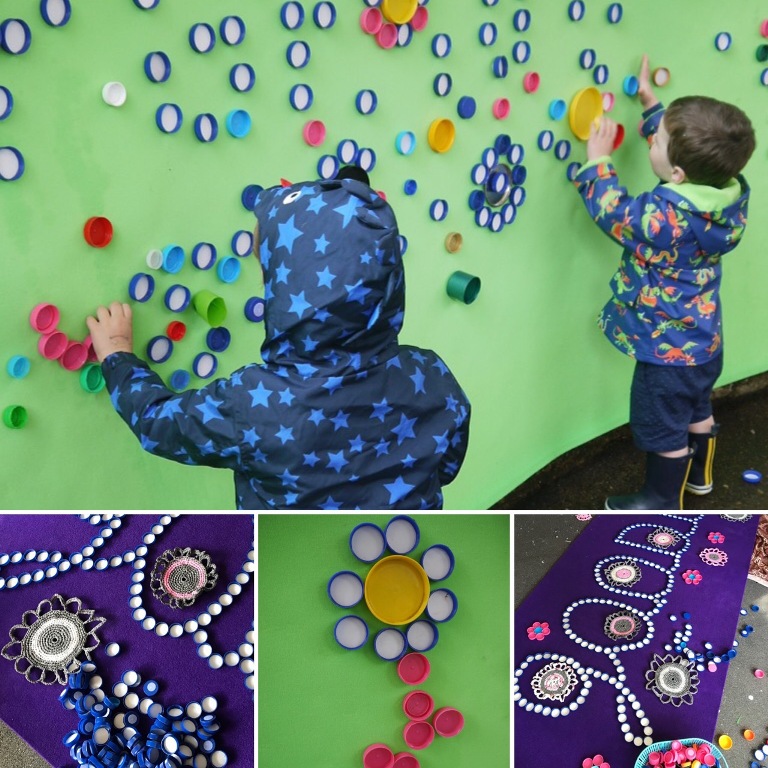
A while ago Pittwater Online News ran an item when Angela was collecting bottle caps for these projects. The Manly based artist is a frequent visitor to Pittwater, taking part in art projects and the summer series of ocean swims that support local surf clubs, both as a photographer and participant.
Eco Art & Designer Angela van Boxtel offers you interesting and fascinating creative projects and workshops in how to reduce waste and educate your audiences in an enticing and interactive way.
The Artist believes 'Less is more' and as such a strategy, less waste - less costs, eventually pays for it self.
Angela has worked with many local councils, at festivals and events and with schools and businesses.
Her creative ideas are engaging, original and ever evolving. They have captured an international following and lots of media attention over the years.
As an Artist & Designer she works closely with environmental groups to stay on top of important issues. Her Bottle cap Murals have featured at public places and festivals such as the Blackmores Open Day, Ocean Care Day Festival, Body, Mind & Spirit Festival, and the As Sustainable as Possible Festival.
Please email her on angela@angelavanboxtel.com if your school would be interested before June 1st 2018
More info on Eco Art & Design Angela van Boxtel at www.angelavanboxtel.com
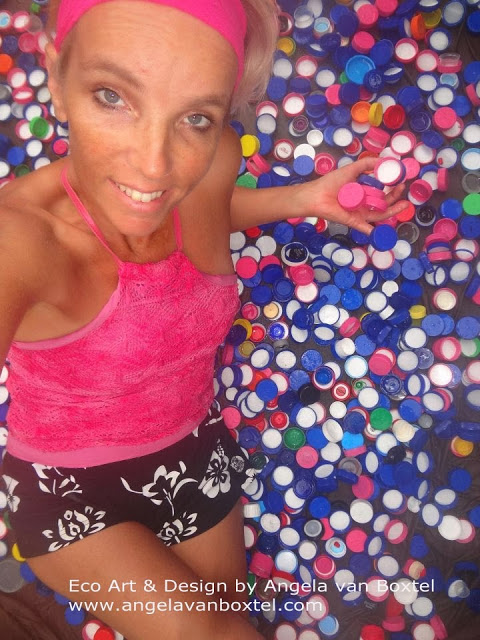
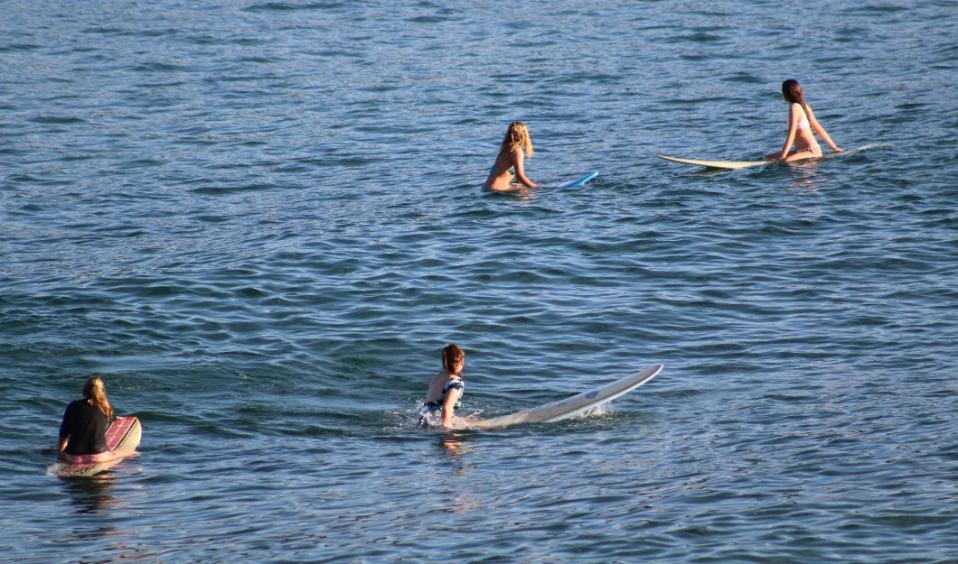
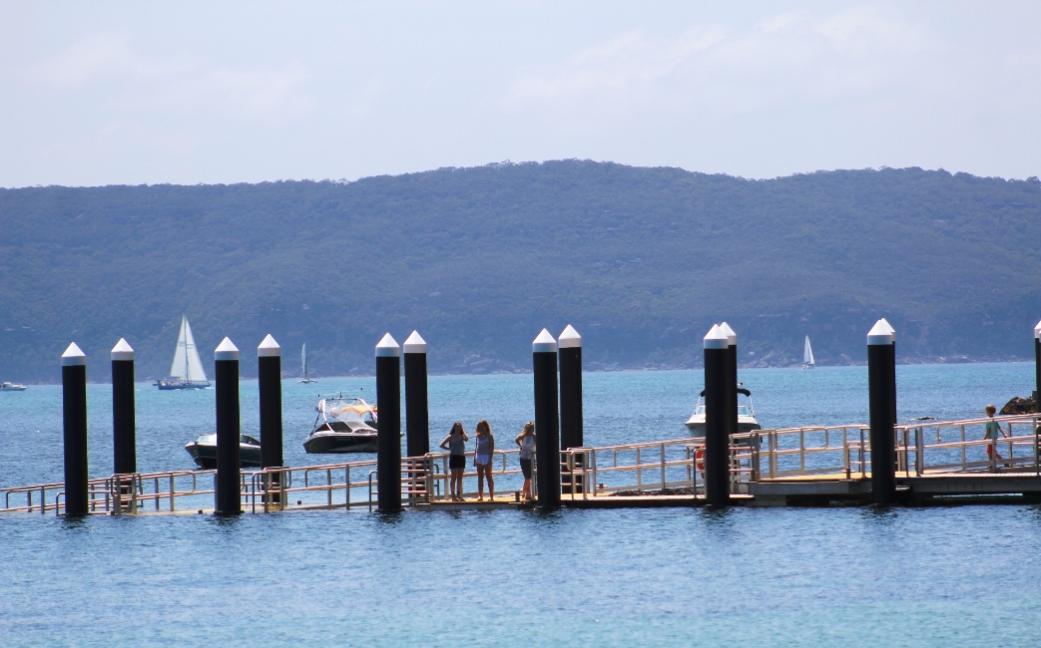
I - Eco Artist & Designer Angela van Boxtel -am looking for a school that be interested in a Plastic Bottle Cap Mural project for their school. (There will be no fee to the school and all services and materials will be included free of charge into the project.) I am looking to do a project with a local Northern Beaches School primary school as part of my educational outcome of my Artist in Residency at Kimbriki.
I am interested in a school that already has a sustainable angle in their education program or focuses on healthy eating habits in their canteen or has a green team of parents at the school of some sort.
The fifth of June is World Environmental Day and this year the theme is focused on plastic pollution and encouraging all to make a stand to ban and diminish our plastic waste.
My bottle cap murals focus on the issue of single use plastics and the possibilities for reuse of these plastics into fun and educational tools.
So if you think your school would be interested then please email me with a short blurb why your school would be interested in such a project.

A while ago Pittwater Online News ran an item when Angela was collecting bottle caps for these projects. The Manly based artist is a frequent visitor to Pittwater, taking part in art projects and the summer series of ocean swims that support local surf clubs, both as a photographer and participant.
Eco Art & Designer Angela van Boxtel offers you interesting and fascinating creative projects and workshops in how to reduce waste and educate your audiences in an enticing and interactive way.
The Artist believes 'Less is more' and as such a strategy, less waste - less costs, eventually pays for it self.
Angela has worked with many local councils, at festivals and events and with schools and businesses.
Her creative ideas are engaging, original and ever evolving. They have captured an international following and lots of media attention over the years.
As an Artist & Designer she works closely with environmental groups to stay on top of important issues. Her Bottle cap Murals have featured at public places and festivals such as the Blackmores Open Day, Ocean Care Day Festival, Body, Mind & Spirit Festival, and the As Sustainable as Possible Festival.
Please email her on angela@angelavanboxtel.com if your school would be interested before June 1st 2018
More info on Eco Art & Design Angela van Boxtel at www.angelavanboxtel.com



A Few Words For The Week
Apparently some Readers have been missing our penchant for seeking out a string of words and sharing them as 'words for the week' in our ever evolving salute towards how what a word means can define a communication to the point of being so succinct it's poetry - as in, it's not just what we say but how we say it, or the words we choose to express something can actually transcend mere patter by inkling of deeper or higher and innate 'songs'.
Hope this satisfies that yen; Hope you all Encourage each other to be Enthusiastic about Enquiring into what's Endemic around here this week!
EN ‘in, within’ from Latin; in. Prefix forming verbs. Nouns; put in or on, go on or into. Adjectives and Nouns; cause to be in a certain state or condition. ENCOURAGE From Middle French encoragement, from Old Frenchencoragier + -ment, from en- (“make, put in”) + corage (“courage”), from Vulgar Latin *coraticum, from cor (“heart, daring”) + -ier, suffixed with -ment. EG; to put heart inENDEMIC from Greek; endemos ‘native’, from en ‘in’ + demos ‘people’. Peculiar to persons in an area. Present within an area. ENQUIRE from Latin; ‘in’ + quaerere ‘to seek’. To ask. To seek information by questioning. ENTHEOS ‘inspired, filled with God’ from Greek; from en ‘in’ (state of) + theos ‘god’. From Greek; enthousiaze in; ‘to be possessed by a god’. Translates as ‘enthusiasm’ into 20thC English. Filled with God. Ardent. Lively interest or eagerness.
What Happens To The Plastic You Throw Away
Published by TED Ed.
View full lesson: http://ed.ted.com/lessons/what-really...
We’ve all been told that we should recycle plastic bottles and containers. But what actually happens to the plastic if we just throw it away? Emma Bryce traces the life cycles of three different plastic bottles, shedding light on the dangers these disposables present to our world.
Lesson by Emma Bryce, animation by Sharon Colman.
Prediction Method For Epileptic Seizures Developed
After 40 Years In Limbo: Styrene Is Probably Carcinogenic
- Monographs are impartial research reports, which assess the strength of evidence for carcinogenic effects so that individual countries have a qualified basis for legislation.
- The reports are prepared by the International Agency for Research on Cancer (IARC), which is one of the WHO's expert bodies.
- Experience shows that countries respond differently to the warnings of the monographs.
- One example is the monograph, which recently showed that diesel exhaust can cause lung cancer. This has led to Germany forbidding the driving of older diesel cars in a number of cities. Other countries have done nothing.
- Another example is the monograph that last year found that the herbicide glyphosate, better known as Roundup, can be carcinogenic. In California this led to requirements for special product labelling, while EU countries do not have to label Roundup as a carcinogen.
New Research Institute To Transform Mathematics In Australia
$100 Million For Myall Lakes Road Upgrades
Italy's Oldest Olive Oil Discovered In Peculiar Pot
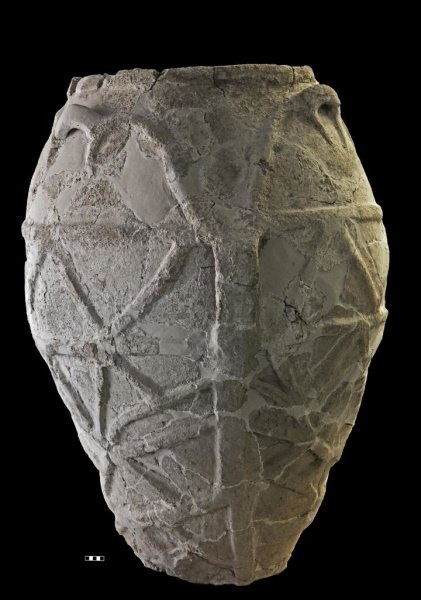
Protecting Places Of The Past For The Future
- $250,000 to reopen the roof of Great Melbourne Telescope, one of the great scientific instruments of the Victorian era.
- $250,000 to improve access and inclusiveness at Hyde Park Barracks for mobility, hearing and visually impaired visitors.
- $70,700 to repair, replace and restore the decaying timber flowing, joists, bearers and stumps at the QANTAS Hanger in Longreach, the birthplace of Australian civil aviation.
Parramatta Light Rail Construction Underway Soon
Berejiklian, Turnbull Feature As UNSW Celebrates Outstanding Alumni
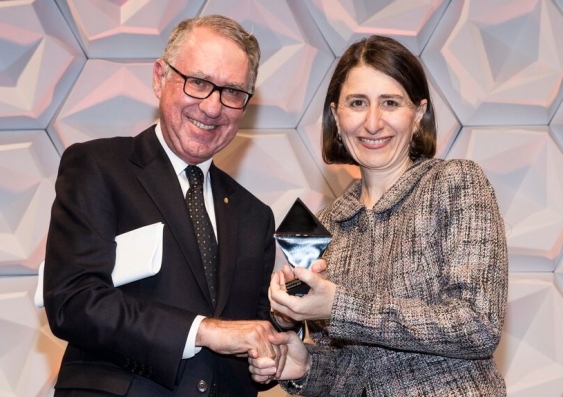
Global Warming Hits Poorest Hardest
GetNZontheMap!
Appointment Of New Aged Care Pricing Commissioner
Longer Lives Demand Super Rethink
Peek At New Tower As POW Hospital Turns 160
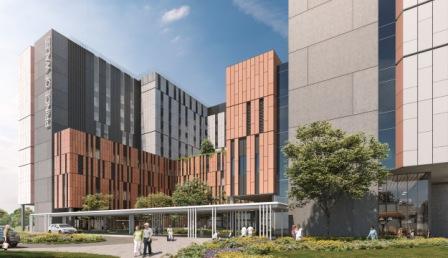
- A new adult emergency department
- More beds
- New intensive care unit
- New operating theatres
- New helipad
- An expanded Psychiatric Emergency Care (PECC)
- A Medical Assessment Unit, including a state-of-the-art Virtual Care Centre
- An expanded Central Sterilising Service Department
- Education and research spaces to support clinical research and innovation; and
- 10 new inpatient units
Disclaimer: These articles are not intended to provide medical advice, diagnosis or treatment. Views expressed here do not necessarily reflect those of Pittwater Online News or its staff.